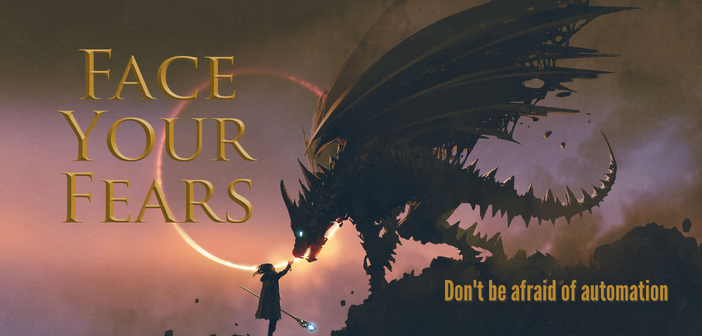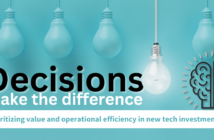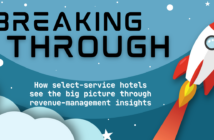Don’t be afraid of automation
Why does automation scare some of us, particularly when it comes to streamlining processes such as revenue management? It certainly doesn’t help that some pundits have claimed that automation in revenue management can be a scary prospect.
The truth is, our entire society has become an automated one. Software-as-a-service (SaaS) providers have worked diligently for years to improve automation capabilities in their products with the goal of enhancing the user experience – whether through mobile apps, dashboards, and/or “single-pane-of-glass” solutions.
Our world has become reliant on automation; regardless of how you feel about it from an existential perspective, it’s an integral part of our lives. How many of us are dependent on Lyft or Uber to get us places, order food to be delivered to our homes, or get the widget we want shipped straight to us at the click of a button?
Perhaps, then, it’s time to revisit the topic of automation in the hospitality industry.
THE UBIQUITY OF AUTOMATION
Cloud computing has changed everything in the past 10-15 years, so much so that it has become pervasive in our daily lives. From a hotelier’s perspective, when it comes to selecting a revenue-management system  (RMS) some want to maintain control, particularly those who’ve never used automation to set rates. Others fear the system will take over their decision-making process. Whatever the reason, it’s important we clear up some misconceptions.
(RMS) some want to maintain control, particularly those who’ve never used automation to set rates. Others fear the system will take over their decision-making process. Whatever the reason, it’s important we clear up some misconceptions.
We’re comfortable with automation in some areas of our lives and not others. Let’s use the smart car vs. the self-driving car as an example. Most of us aren’t comfortable with fully automated cars driving us around. There are a lot of reasons why, but a lack of trust in the system is likely the main one for many of us. But, there is a difference between a smart car and a self-driving car.
A smart car has alerts that such as auto-assist cruise control, lights on mirrors that tell us when someone is in our blind spot, and cameras that show us what’s behind us when backing up. These fancy features help us make the right decision along the way. But, they still require a human at the helm. In other words, smart cars have parameters with the goal of notifying the driver about potential hazards, but they aren’t self-driving without any intervention.
From a revenue-management perspective, RMS isn’t a self-driving car and isn’t trying to be. When selecting an RMS, some revenue managers want to maintain control over the system because that seems more comfortable. While this is understandable, they don’t understand what that means from an analytical perspective. When you pick and choose what to deploy in a self-learning system, the analytics can’t learn whether it’s making the right decisions.
TRUST THE PROCESS
When working with an advanced RMS, it’s important to understand that a self-learning mechanism creates decisions, deploys them, and monitors changes so it can redeploy new decisions based on that data. This is done in the background and the decisions are based on thousands of computations and algorithms.
An RMS that isn’t a self-learning system cannot automatically learn from its environment. Rather, a decision-support system relies on a rules-based approach to dynamic pricing and is only as smart as the users configuring it and the validity of their rules. Regular manual intervention can be difficult to navigate and maintain as market conditions shift – and especially as staffing changes occur.
Decision support can help provide analytics to aid infrequent strategic decision-making, but let’s not forget all the tactical decisions that also need to be made every minute of every day. How can one human – or team, for that matter – handle it all without the intelligent automation that decision management provides?
For example, a revenue manager can’t possibly determine a property’s true unconstrained demand at all times or even at any given moment. For a 500-room hotel, for example, the unconstrained demand could be 450, or it could be 600, but only a self-learning, science-based RMS can understand the fluctuating opportunity cost, day-by-day and moment-by-moment, and then select the right rate at the right time.
Some systems require a revenue manager to manually approve price changes. While these systems can be placed on autopilot, they still require intervention. Humans simply cannot do the same number of calculations as an RMS. It’s not possible, and we shouldn’t expect revenue managers to implement those decisions. Those revenue managers who continue to manually review rates, even questioning the right price points, likely end up agreeing with the rates the system has presented to them, resulting in wasted time to market.
Revenue managers are a valuable asset. Ideally, if using an advanced system, the RMS should be making pricing decisions for 90% of the days being monitored. The revenue manager should be focused on the other 10%, such as deciding the right rate for upcoming holidays, or sporting or local events taking place in their markets.
By letting the automation do the number-crunching and trusting the system, the revenue manager can then spend time on distribution strategies to maximize profit.

YOU GOTTA HAVE FAITH
A lot of people assume analytics should think the way a human thinks, but that’s not true. Humans can take in a world of knowledge, such as gas being more expensive or what competitors are doing, but analytics doesn’t think that way because it doesn’t always know these nuances.
For instance, you can’t have the analytics read the newspaper and then decide to incorporate some of those macroeconomic trends. Instead, analytics can pick up a trend without knowing the real-world scenario that caused it. Humans act in reverse process, seeing a real-world scenario and changing their assumptions based on the new knowledge.
Self-learning revenue management systems automatically create new data points to calibrate. For example, they can recalibrate booking curves every couple of weeks as new trends and patterns occur, or recalculate price sensitivity every couple of weeks by determining when guests are willing to pay more or less than they were in the previous period.
With a range of automated revenue-management solutions and pricing tools on the market to consider, it comes down to rules-based, decision-support tools that provide recommendations vs. analytics-based, decision-management solutions that automatically produce powerful decisions that manage pricing, rate availability, and more.
IF YOU BUILD IT…
In today’s volatile and complex shifts in the market, self-learning mechanisms are more important than ever. But, this doesn’t mean the system will take over. If you believe in the process, you believe in the outcome. It means having faith that the system will produce the results based on the input it has been given.
So, is automation a scary word? Perhaps, for some, but savvy, innovative hoteliers are investing in an automated, decision-making RMS that will empower their hotel by enhancing revenue with greater efficiency, long-term stability, and exponential growth.





